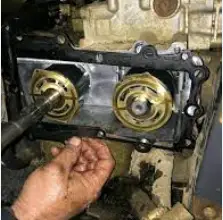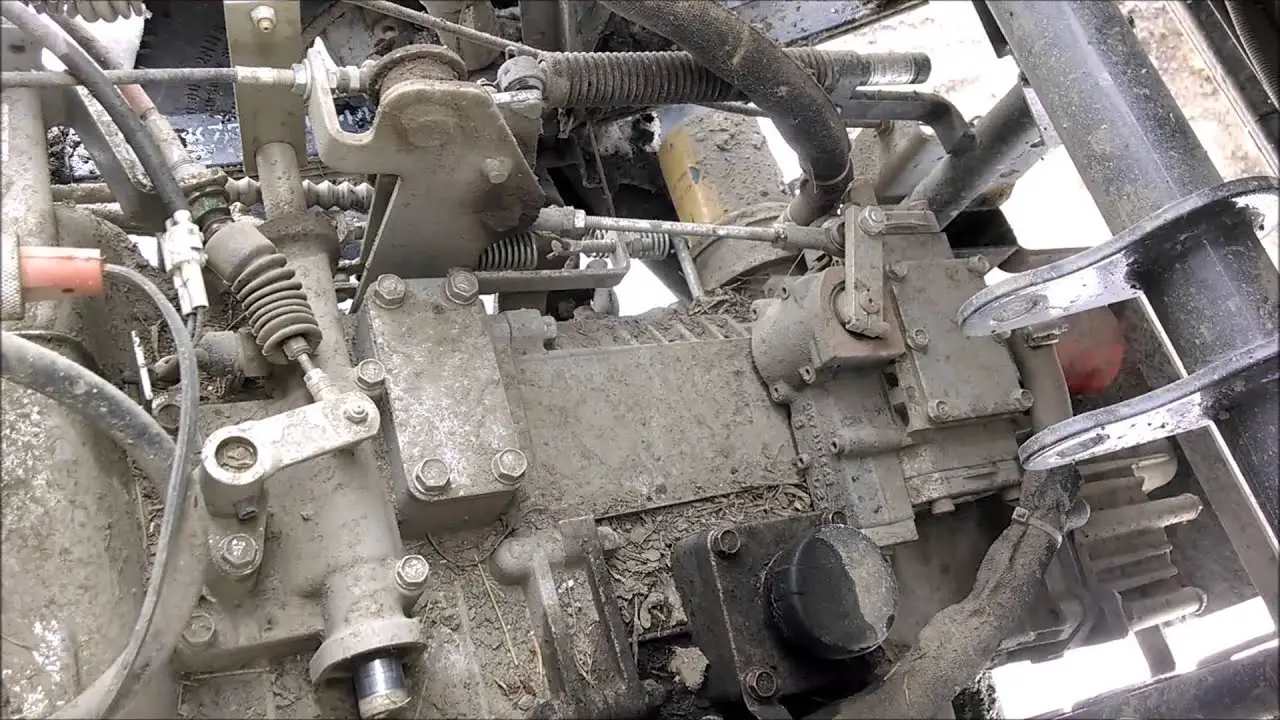The Kubota RTV 900 is a rugged utility vehicle known for its durability, versatility, and exceptional performance in various outdoor applications.
One crucial aspect of maintaining optimal performance in the RTV 900 is ensuring that its transmission system is properly adjusted. But how do you adjust the Kubota Rtv 900 Transmission?
The transmission adjustment process involves fine-tuning the transmission to ensure smooth shifting, efficient power transfer, and overall reliable operation.
In this article, we’ll go through everything about Kubota RTV 900 transmission adjustment. So, why late? Let’s dig into this article.
Adjusting the transmission on a Kubota RTV 900 involves:
- Ensuring safety by turning off the engine and engaging the parking brake.
- Accessing the transmission area, usually under the seat or at the rear.
- Checking and topping up the transmission fluid if necessary.
- Locating and adjusting the transmission linkage to align with the neutral position.
- Test driving to ensure smooth gear shifts.
- Reassembling any removed parts.
How to fix a Kubota’s RTV transmission
How to Adjust the Kubota RTV 900 Transmission
Safety First:
- Ensure the vehicle is on a flat and stable surface.
- Turn off the engine and remove the key.
- Engage the parking brake.
Access the Transmission:
- Open the vehicle’s hood or access panel to reach the transmission area. This might be located under the seat or at the rear, depending on the model.
- Before making any adjustments, ensure that the transmission fluid is at the correct level. Top it up if necessary with the recommended fluid.
Adjust the Linkage:
- Locate the transmission linkage. This is usually a rod or cable that connects the gear shifter to the transmission.
- Check for any signs of wear or damage. Replace if necessary.
- Loosen the adjustment nut on the linkage.
- Move the gear shifter to the neutral position.
- Adjust the linkage so that it aligns properly with the neutral position on the transmission.
- Tighten the adjustment nut.
Test Drive:
- Start the vehicle and test drive it in a safe area. Shift through all the gears to ensure smooth operation.
- If you notice any issues, you may need to make further adjustments or consult with a mechanic.
Reassemble:
- Once you’re satisfied with the adjustment, reassemble any parts you removed to access the transmission.
Regular Maintenance:
- Regularly check the transmission fluid and ensure that the linkage is in good condition. This will help in the longevity of the transmission and reduce the need for frequent adjustments.
Symptoms of Kubota RTV 900 Transmission Problems
If your Kubota RTV 900 suddenly seems sluggish or is making strange noises, the transmission could be acting up. Here are some symptoms to watch out for:
Lack of Power
If your RTV struggles going up hills or accelerating, the transmission may be having issues. The belts or clutches inside the transmission could be worn or damaged, preventing enough power from getting to the wheels.
Grinding or Whining Noises
Any loud or strange sounds coming from the transmission are a bad sign. Grinding, whining or squealing noises usually indicate worn or damaged parts like bearings, clutches, or gears.
Leaking Fluid
Check under your RTV for any puddles of red fluid – if the transmission is leaking, it needs to be repaired or replaced immediately. Low fluid levels will damage the transmission.
Hard or Delayed Shifting
If the transmission is shifting roughly, slowly, or not at all, this indicates a problem with the linkages, clutches, or valves inside the transmission.
Vibrations
Excessive vibration, especially at higher speeds, points to issues like an imbalanced driveshaft or damaged transmission components.
The best way to diagnose and repair transmission issues is to have the RTV checked by a certified Kubota mechanic as soon as possible.
They have the proper equipment, tools, and experience to test the transmission. Determine the problem and perform any necessary repairs or replacements to get your Kubota RTV 900 moving like new again.
The longer you operate it with a damaged transmission, the more it will ultimately cost to fix.
- You Can See: 1999 Dodge Ram 1500 Transmission Band Adjustment
How to Check Kubota RTV 900 Transmission Fluid Level
To keep your Kubota RTV 900 running strong, checking the transmission fluid level regularly is important. Here’s how to do it:
Pop the hood open and locate the transmission dipstick – it’s the one with the yellow handle toward the rear of the engine compartment. Pull out the dipstick, wipe it clean, and fully reinsert it. Then pull it out again to check the level.
The fluid should be clear and reddish in color. If it’s dark or smells burnt, it’s time for a fluid change. The ideal level is in the “full” range on the dipstick.
If it’s low, add fluid through the dipstick tube using a funnel. Only add a little at a time, rechecking the level with the dipstick, until it reaches the full mark.
Never overfill the transmission, as too much fluid can damage components. Only use Kubota Super UDT fluid or an equivalent multi-purpose tractor fluid. Changing the filter when changing the fluid is also recommended.
Properly maintaining your RTV’s transmission will help ensure a long, trouble-free life. So make checking and changing the transmission fluid part of your regular maintenance routine. Your Kubota – and your wallet – will thank you for it!
Keeping an eye on that transmission dipstick and using the recommended fluid is really all there is to it. But taking a few minutes to check it regularly can save you from expensive repairs down the road. Now get out there and enjoy your RTV, knowing its transmission is well cared for!
- You Can See: What Causes a Manual Transmission to Pop Out of Gear
How to Replace the Transmission Filter on a Kubota RTV 900
To replace the transmission filter on your Kubota RTV 900, you’ll need to drain the transmission fluid, remove the old filter, install a new filter, and refill the transmission with fresh fluid.
This maintenance should be done every 200 hours of operation to keep your utility vehicle running strong.
Drain the Transmission Fluid
Park the RTV on level ground and allow the engine and transmission to cool for at least 30 minutes.
Locate the transmission drain plug under the vehicle. It will typically be on the bottom or lower side of the transmission. Place a drain pan underneath and remove the drain plug to drain the old fluid.
Remove the Old Filter
The transmission filter is usually found on the side of the transmission. Loosen and remove the bolt in the center of the filter with a socket wrench.
Pull off the old filter by hand and clean the filter mount surface. Check that the new filter’s rubber gasket is in place before installation.
Install the New Filter
Screw on the new filter by hand first to ensure it’s aligned properly. Then tighten the center bolt with the socket wrench according to the torque specification in your owner’s manual.
Typically, tightening the filter by hand and then turning it an additional 1/2 to 3/4 turn with the wrench will sufficiently seal the filter without over-tightening.
Refill With Transmission Fluid
Replace the drain plug and tighten it securely. Refill the transmission through the filler tube with the recommended fluid type and quantity listed in your owner’s manual. Start the engine and check for leaks.
Let it run through different gears for a few minutes. Shut off the engine and recheck the fluid level, adding more if necessary. Proper fluid level is essential for effective transmission operation and to prevent overheating.
Following these steps to replace your Kubota RTV 900’s transmission filter will help keep the utility vehicle running strong for the long haul.
Be sure to also follow the recommended fluid and filter change intervals in your owner’s manual to keep all systems in tip-top shape.

Frequently Asked Questions
What are the signs that my Kubota RTV 900 transmission needs adjustment?
Common signs include difficulty in shifting gears, unusual noises during operation, slipping gears, or poor vehicle performance, especially in challenging terrains.
Is it safe to adjust the transmission on my own?
Adjusting the transmission requires specific knowledge and skills. While experienced users can perform minor adjustments, it’s always recommended to consult the owner’s manual or get assistance from a trained professional, especially if you’re unsure.
How often should the transmission be adjusted?
This largely depends on usage. Regularly check the transmission and perform adjustments if you notice signs of wear or poor performance. Always follow maintenance schedules provided in the owner’s manual.
Do I need specialized tools to adjust the transmission?
While basic tools can be used for some adjustments, specialized tools may be required for specific tasks. Always check the service manual to ensure you have the right tools for the job.
Can incorrect transmission adjustment cause damage?
Yes, incorrect adjustments can lead to accelerated wear, damage to the transmission components, and poor vehicle performance. Always ensure adjustments are done correctly and cautiously.
Final Thought
Proper transmission adjustment is a fundamental aspect of maintaining the optimal performance and reliability of the Kubota RTV 900.
This is why it’s so important to have a clear idea of Kubota Rtv 900 Transmission Adjustment and everything related to it.
Hopefully, this article will be helpful for all of you to get an overall idea. Thank you all for reading this article.
See Also:



